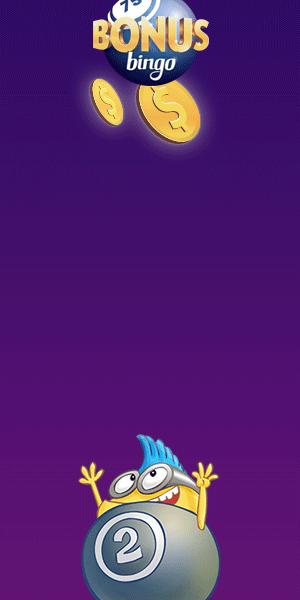How to Bet on Genre Waves in the Triple J Hottest 100: From Indie Rock to Alt-Pop Takeovers

An Australian cultural institution, the Triple J Hottest 100 is more than just a countdown of the year’s best songs; it’s a vibrant snapshot of the nation’s musical zeitgeist. For the savvy music fan and aspiring betting strategist, understanding the ebb and flow of musical tastes can be the key to not only predicting the winner but also identifying the broader genre “waves” that often dominate the annual poll. From the guitar-driven anthems of indie rock to the bedroom-produced beats of electronic artists and the infectious hooks of alt-pop, the Hottest 100 has seen distinct eras of genre dominance. Learning to spot these tidal shifts is crucial for anyone looking to place a well-informed wager.
The Golden Age of Guitars: The Indie Rock Reign
The history of the Hottest 100 is deeply rooted in rock. In its early days, after transitioning from an “all-time” to an annual format in 1993, alternative rock was the undisputed king. The ’90s saw international giants like Nirvana and The Cranberries take out the top spots, reflecting a global movement. However, it was the late ’90s and 2000s that ushered in a golden era for Australian indie rock. Bands like Powderfinger, who hold the remarkable record of topping the countdown in consecutive years (1999 and 2000), became Hottest 100 royalty.
This period was characterized by a groundswell of support for homegrown talent, often discovered and championed by Triple J’s own Unearthed platform. Spiderbait’s 1996 win with “Buy Me a Pony” was a watershed moment, marking the first time an Australian act had claimed the number one position. This opened the floodgates for a wave of Australian indie artists to not only feature heavily but to consistently challenge for the top spots. The dominance of guitar-based music was a reflection of the live music scene and the kind of raw, anthemic energy that resonated deeply with the Triple J listenership of the time.
The Electronic Uprising: From Niche to Number One
As the new millennium progressed, a noticeable shift began to occur. While rock acts still featured prominently, the distinctive sounds of electronic music started to gain significant traction. Initially, acts like The Presets and The Avalanches carved out a space for dance and electronic music within the countdown. However, the true turning point can be largely attributed to the meteoric rise of a bedroom producer from Sydney: Flume.
Flume’s appearance in the 2012 countdown was a breath of fresh air, and his eventual win in 2016 with “Never Be Like You” was a landmark moment, marking the first time an electronic song had topped the poll. This victory solidified the arrival of electronic music as a dominant force in Australian popular music. Flume’s success was emblematic of a broader trend; the rise of the producer as a headline artist and the increasing sophistication of electronic music that blurred the lines between dance, pop, and experimental sounds. This wave was further bolstered by the success of other electronic acts and the increasing prevalence of electronic elements in the music of artists across various genres.
The Alt-Pop Takeover and the TikTok Effect
In recent years, the Hottest 100 has witnessed another significant evolution, with alt-pop and pop-influenced tracks gaining increasing prominence. This shift reflects a broader change in how music is consumed, with global streaming platforms and social media, particularly TikTok, playing a huge role in shaping musical trends. The success of international artists like Billie Eilish, whose track “Bad Guy” won in 2019, underscored this changing landscape.
The influence of TikTok on the Hottest 100 cannot be overstated. Songs that go viral on the platform often see a corresponding surge in votes, as was the case with Glass Animals’ “Heat Waves,” which had a prolonged period of popularity on the app before its Hottest 100 success. This has led to a more diverse and, at times, unpredictable countdown, where a viral hit can compete with heavily rotated Triple J mainstays. The 2024 countdown further cemented this trend, with American artist Chappell Roan’s “Good Luck, Babe!” taking the top spot, a song that gained massive traction on social media.
Key Indicators for Betting on the Next Wave
For those looking to bet on the Hottest 100, identifying the next genre wave requires a multi-faceted approach. Here are some key indicators to watch:
- Triple J Airplay: High rotation on Triple J remains a strong predictor of Hottest 100 success. The station’s playlist is a curated reflection of what they believe their audience wants to hear, and this exposure is invaluable for artists.
- Major Festival Lineups: The lineups of major Australian music festivals like Splendour in the Grass and Falls Festival can be a strong indicator of which artists have had a successful year and are likely to feature prominently in the countdown. Flume’s 2016 Hottest 100 win came after a headline slot at Splendour in the Grass that same year, showcasing a clear correlation.
- Prediction Websites and Social Media Buzz: Websites like 100 Warm Tunas, which aggregate votes shared on social media, have become remarkably accurate in predicting the outcome of the Hottest 100. Monitoring these sites, as well as general social media sentiment and viral trends on platforms like TikTok, can provide crucial insights into a song’s momentum.
- Betting Odds: Keeping an eye on the odds offered by bookmakers can also provide a good indication of which songs and genres are considered frontrunners. These odds are often influenced by the factors listed above and can shift in response to public sentiment and campaigning.
While the Hottest 100 has seen a decline in the representation of Australian artists in recent years, a trend that coincides with the rise of global streaming and social media, the passion for homegrown music remains. By paying close attention to the evolving sonic landscape, from the festival stage to the TikTok feed, it is possible to not only anticipate the next number one, but to ride the wave of the next genre takeover in the world’s biggest musical democracy.







